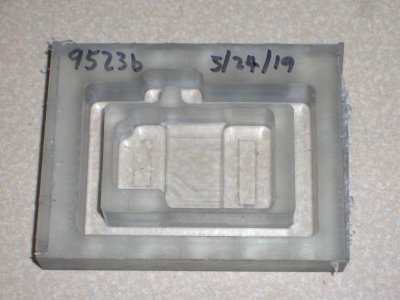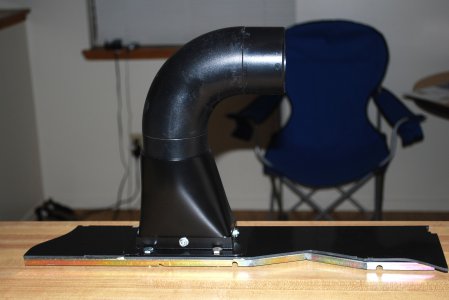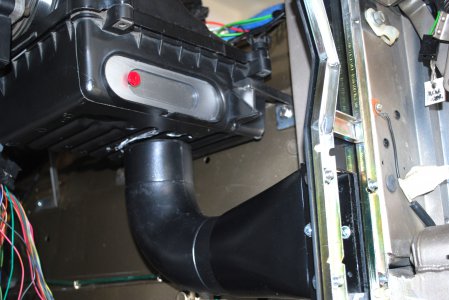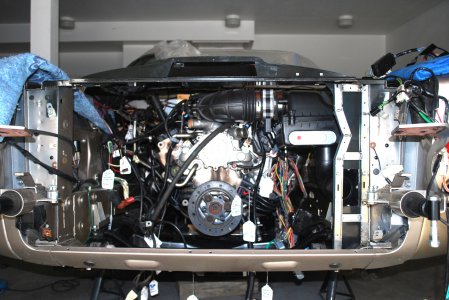-
Welcome back Guest! Did you know you can mentor other members here at H-M? If not, please check out our Relaunch of Hobby Machinist Mentoring Program!
You are using an out of date browser. It may not display this or other websites correctly.
You should upgrade or use an alternative browser.
You should upgrade or use an alternative browser.
What have you made out of polycarbonate?
- Thread starter Firstgear
- Start date
- Joined
- Feb 8, 2014
- Messages
- 11,176
Nice find. !
Mostly I have made machine guards out of it. The pieces that you have would make great bulletproof window glazing if you have a need for that. Think that 3/8 will stop a .45 ACP round point blank.
Think that 3/8 will stop a .45 ACP round point blank.
Normal woodworking tools work well for sawing. Machines nicely with aluminum or wood working cutters. Works a lot like aluminum. Surface speeds should be a lot slower than you think to keep from melting, you can push the feed rates up. I normally cut dry, but have used dish soap and water successfully, stay away from petroleum based coolants, especially for tapping. Petroleum based fluids can cause crazing, especially when tapping. I have used a synthetic water based coolant successfully. Google plastic or brass drills for a proper grind for drilling.
Mostly I have made machine guards out of it. The pieces that you have would make great bulletproof window glazing if you have a need for that.
Normal woodworking tools work well for sawing. Machines nicely with aluminum or wood working cutters. Works a lot like aluminum. Surface speeds should be a lot slower than you think to keep from melting, you can push the feed rates up. I normally cut dry, but have used dish soap and water successfully, stay away from petroleum based coolants, especially for tapping. Petroleum based fluids can cause crazing, especially when tapping. I have used a synthetic water based coolant successfully. Google plastic or brass drills for a proper grind for drilling.
- Joined
- Apr 23, 2018
- Messages
- 6,883
So if you wanted to laminate the windows of your Corvette with a bulletproof ply or two of polycarbonate, I'd look into the optically clear UV-curing gel adhesives. I think you should do it.
- Joined
- Feb 17, 2013
- Messages
- 4,417
I've machined polycarbonate on my small CNC mill. Use a SHARP cutter! And for coolant, I used plain water, dispensed from a squirt bottle.
The finished part (machined from a piece of ¾" thick polycarbonate:

Posts about the project:
https://www.hobby-machinist.com/threads/single-point-threading-first-time.78590/#post-669462 (Post #18)
https://www.hobby-machinist.com/threads/fusion-360-g-code-bugs.78151/#post-663753 (Post #7)
The finished part (machined from a piece of ¾" thick polycarbonate:

Posts about the project:
https://www.hobby-machinist.com/threads/single-point-threading-first-time.78590/#post-669462 (Post #18)
https://www.hobby-machinist.com/threads/fusion-360-g-code-bugs.78151/#post-663753 (Post #7)
- Joined
- Feb 2, 2013
- Messages
- 3,967
i have made many replacement see thru doors for meat processing equipment.
i have made VFD enclosures from poly carb,
templates for drilling holes repeatedly,
triangle layout tooling -equilateral(45°-45°-90°) & right(30°-60°-90°),
machine guards
i have made VFD enclosures from poly carb,
templates for drilling holes repeatedly,
triangle layout tooling -equilateral(45°-45°-90°) & right(30°-60°-90°),
machine guards
- Joined
- Mar 15, 2019
- Messages
- 713
24 sheets 4x7 feet are practically screaming out "Turn me into a see through boat!"
If it forms well with not too much heat I'd turn it into a canoe or kayak. Although a layout boat for ducks would be fun too.
Wonder Woman's jet?
If it forms well with not too much heat I'd turn it into a canoe or kayak. Although a layout boat for ducks would be fun too.
Wonder Woman's jet?



